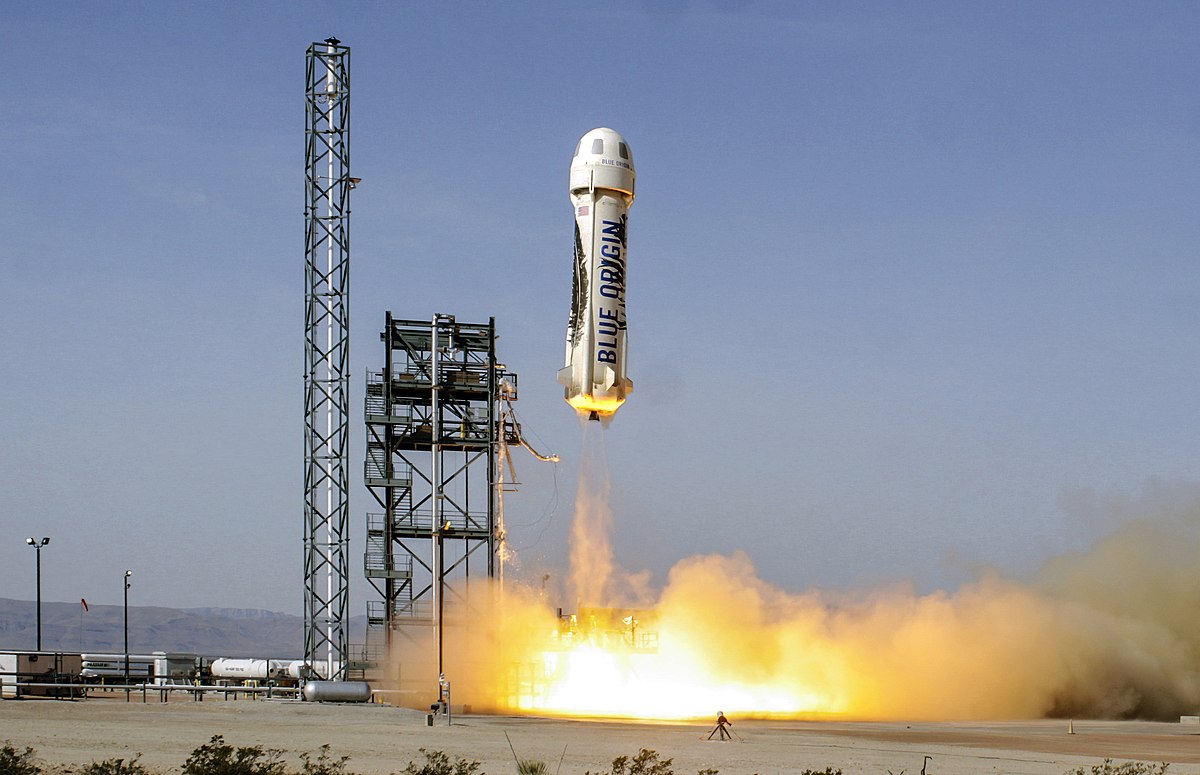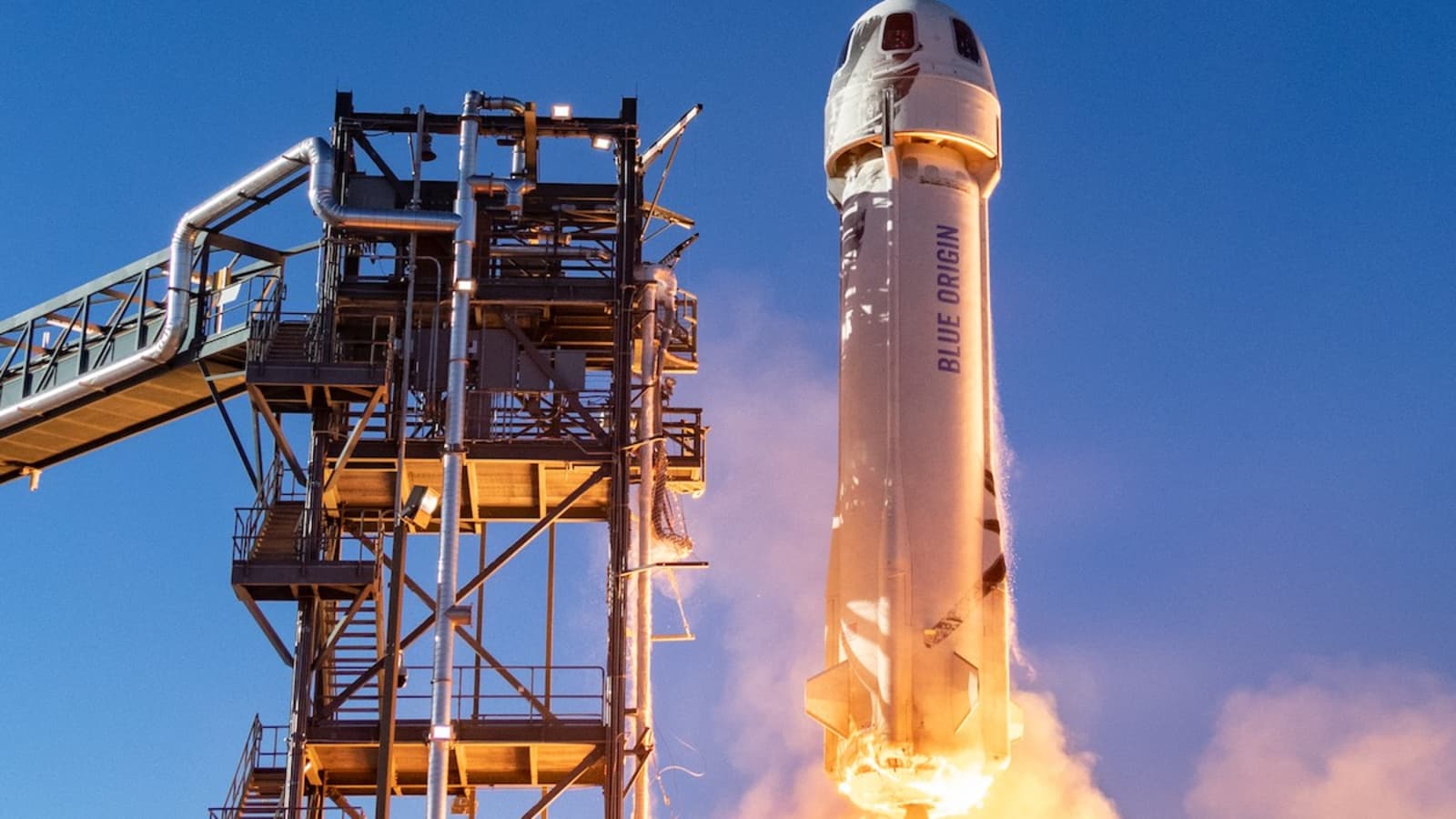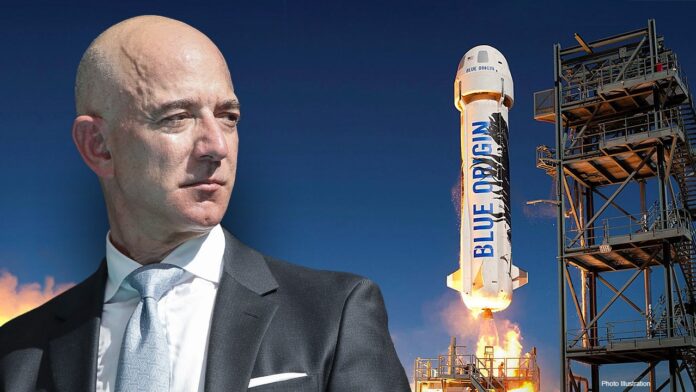Jeff Bezos, the creator of Amazon and its executive chairman, founded Blue Origin, a private spaceflight business, in Kent, Washington, in 2000. The group wants to build a world where people live and work in space for the benefit of Earth.
“Gradatim ferociter”, which translates to “step by step, ferociously” in Latin, is Blue Origin’s motto and represents the company’s progressive growth approach. In 2000, there were only a few employees working for the company; today, there are roughly 3,500.
The goal of Blue Origin is to protect Earth by locating more material and energy resources as well as moving industries that could endanger the planet to space. The company, named after the blue planet (Earth) from which the trips take off, is creating reusable rocket engines and launch vehicles in an effort to make space travel substantially less expensive and more accessible.

A timeline of significant occasions in Blue Origin’s history is provided below:
- Bezos incorporates Blue Origin in 2000.
- 2003. Rob Meyerson, an aerospace engineer, first joins the company as a programme manager before rising to the post of president, which he retains until 2018.
- A human suborbital vehicle for tourism and scientific research is what Blue Origin’s New Shepard programme, named after Alan Shepard, the first American to fly in space in 1961, plans to create in 2005.
- Nov. 13, 2006. Goddard, a research rocket developed by Blue Origin for the New Shepard programme, makes its first flight. Goddard, which has now been deactivated, was named after American rocket pioneer and physicist Robert Goddard.
- 2008-2010. New Shepard, Blue Origin’s vertical takeoff and landing spacecraft, is still under construction.
- April 2011. The Commercial Crew Program (CCP), an initiative under which NASA collaborates with commercial partners to build rockets and spacecraft, sees Blue Origin receive $22 million from the National Aeronautics and Space Administration.
- Aug. 24, 2011. Bezos confirmed the suborbital booster from Blue Origin’s New Shepard test rocket was destroyed in midair. According to the corporation, the spacecraft reached a speed of Mach 1.2 and a height of 45,029 feet before exploding.
- Oct. 20, 2012. Blue Origin successfully launches a suborbital New Shepard capsule as part of a test of its rocket escape mechanism as part of its collaboration with NASA’s CCP. After ascending to a height of 2,307 feet, the capsule parachute down.
- April 29, 2015. Flight testing of the New Shepard rocket, including the propulsion module and space capsule, without a crew starts after several years of development. The New Shepard booster makes history by performing the first successful powered vertical soft landing of a booster rocket after returning from space at a height of 62.4 miles.
- In 2017, test pilots will be launched by Blue Origin, and in 2018, passengers will travel into space.
- Sept. 12, 2016. John Glenn, the first American in orbit, is honoured by Blue Origin with the moniker New Glenn for its two-stage orbital rocket. The vehicle’s 23-foot-wide reusable booster will be powered by seven Blue Origin BE-4 engines. The first stage of the rocket will touch down vertically.
- March 7, 2017. The French company Eutelsat Communications SA has been named Blue Origin’s first client for satellite launch services.
- Dec. 12, 2017. NASA-funded space technology is used in a test experiment that the business flies on New Shepard with the goal of saving the lives of astronauts who sustain chest injuries such as collapsed lungs.
- April 29, 2018. New Shepard is put through its ninth test by the firm. The vehicle reaches a record-breaking 351,000 feet. The spacecraft contains research payloads for the German and Johnson Space Centers of NASA. One of the six seats in the crew capsule is occupied by a test dummy known as Mannequin Skywalker, who is there to gather flight data. By the end of 2018, Blue Origin anticipates that New Shepard will conduct a test flight carrying passengers.
- June 21, 2018. Blue Origin declares that it will begin selling general public tickets for New Shepard flights in 2019.
- May 9, 2019. The business introduces Blue Moon, a sizable lunar lander powered by a BE-7 engine and scheduled to launch on a New Glenn rocket. Blue Origin also asserts that it can help the Trump administration achieve its objective of putting Americans on the moon by 2024 via the Blue Moon lunar lander.
- Dec. 12, 2019. The 12th test flight for Blue Origin on New Shepard is completed. The suborbital rocket has not yet carried any passengers, according to the business.
- Oct. 13, 2020. The 13th test launch of Blue Origin’s New Shepard suborbital rocket, which travels to the edge of space. The test flight’s objective is to evaluate NASA’s precise lunar landing technology.
- Early 2020. The fourth quarter of 2022 will be the earliest that Blue Origin can deploy New Glenn, according to the company.
- June 12, 2021. For $28 million, Blue Origin auctions off a seat on its first private astronaut flight.
- July 20, 2021. When New Shepard successfully completes its first flight carrying Jeff Bezos, his brother Mark Bezos, Wally Funk, and Oliver Daemen, Blue Origin makes history.
- Oct. 13, 2021. On the New Shepard rocket, actor William Shatner and three other people travel to space. Shatner, who played Captain James Kirk in the original Star Trek TV series, turns 90 and becomes the oldest person to travel to space.
- 2021 November. Blue Origin’s lawsuit against NASA for a $2.9 million contract the organisation gave to Elon Musk’s SpaceX rocket business is unsuccessful.
- Dec. 11, 2021. Along with Laura Shepard, the daughter of astronaut Alan Shepard, and four other passengers, Blue Origin launches Michael Strahan, a former football player and host of Good Morning America, into space.
- In March 2022, a fourth crewed flight took place.
- Following the postponed mission the previous month, New Shepard successfully launched its sixth crewed mission on June 4 of 2022.
- On August 4, 2022, the sixth crewed flight took conducted.
Blue Origin and the SpaceX
Two years after Jeff Bezos launched Blue Origin, businessman Elon Musk launched SpaceX on May 6, 2002, with the intention of revolutionising the aerospace sector and enabling reasonably priced space travel. Sending a mission to Mars was Musk’s primary goal.
The Falcon 1 rocket, a disposable, two-stage, liquid-fueled vehicle created by Hawthorne, California-based SpaceX to launch small satellites into orbit, flew from 2006 to 2009. SpaceX produced reusable rockets as well.
Blue Origin has conducted nearly 19 New Shepard missions, with only one partial failure as the rocket booster fell but the passenger capsule landed safely. Since its formation, SpaceX has launched more than 134 missions with 132 successes, one partial success, and one in-flight failure.

The following are some distinctions between Blue Origin and SpaceX:
- Blue Origin developed technology over time to achieve its objectives, but SpaceX sought to build a lucrative space enterprise as quickly as feasible.
- SpaceX’s vehicles have reached high speeds of 24,600 mph and a top altitude of 363 miles, while Blue Origin’s New Shepard rockets have reached top speeds of 2,234 mph and a top height of 66 miles.
- Blue Origin saw tourist-only suborbital spaceflights as the solution to increasing human presence in space. Reaching orbit was SpaceX’s objective.
Future rocket and engine development by Blue Origin is still a goal in order to send more cargo and passengers into space. The enterprise wants to settle the solar system.
Additionally, NASA is prepared to decommission the International Space Station by the end of the decade and locate a replacement for it. The International Space Station is only allowed to operate until 2024, however that date may be extended until 2028. To that purpose, NASA has also given Blue Origin and its collaborators $130 million to create Orbital Reef, a new commercial space station that functions as a mixed-use industrial park in orbit. Before 2030, NASA hopes to launch the next space station.



